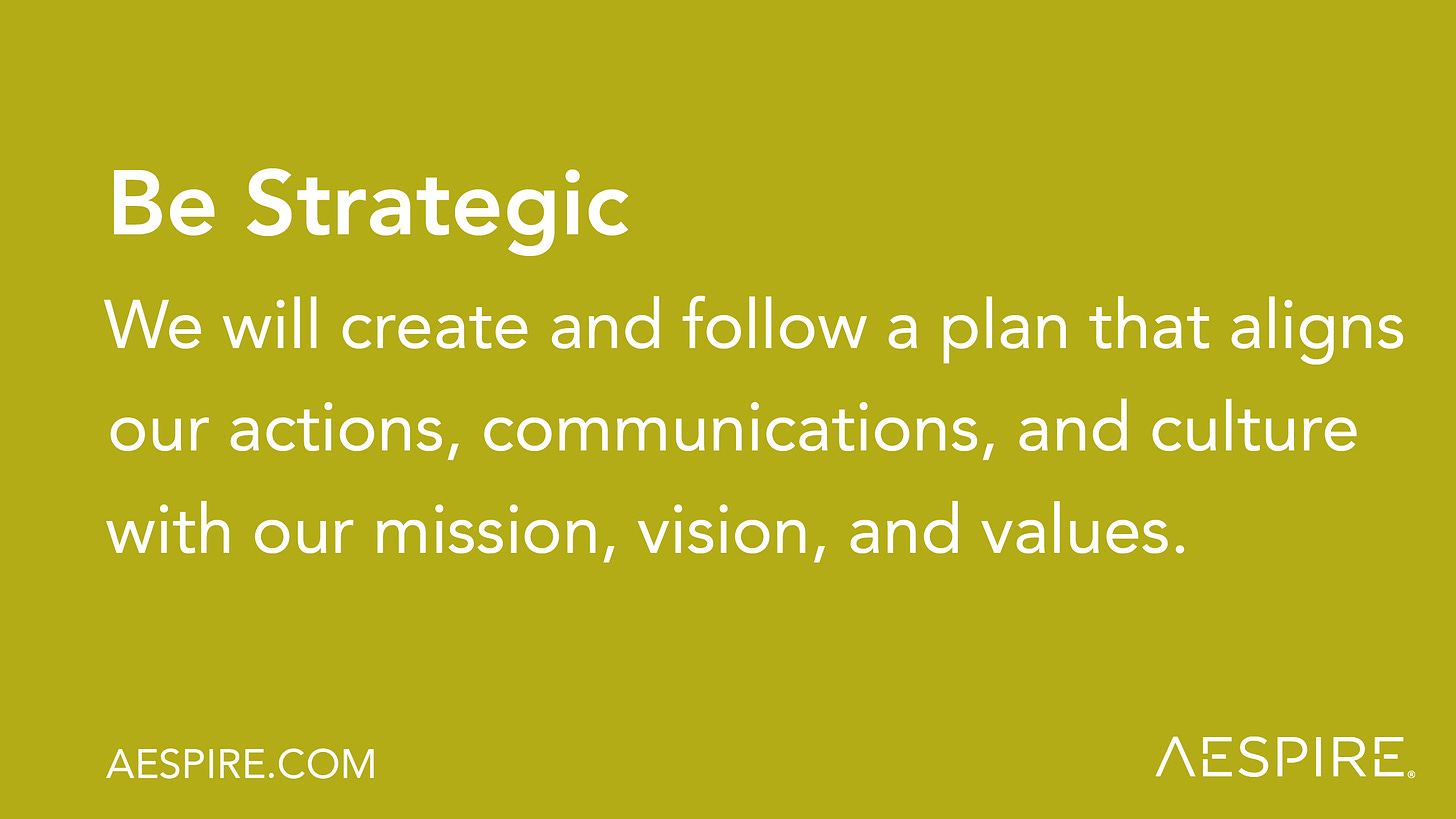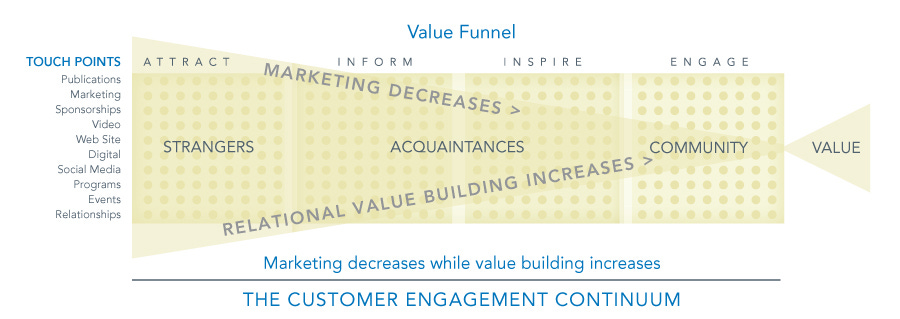A Different Kind of Customer Journey
I have a confession.
My password manager is littered with logins for lifetime deals for software platforms and marketing tools that promised they would revolutionize how I solved the problem they promised to solve.
How did I get here?
I followed the alluring and manipulative sales funnels and their evil offspring, click funnels, into dark alleys where they took my money and filled me with regret, despite the 30-day money-back guarantee.
You have similar experiences, don’t you? You joined an email list to get 5% off those shoes, and now you get a weekly email no matter how many times you unsubscribe. Nurture turns into nagging, and soon you’re tired of the company and annoyed with the brand.
There is a better way.
Start with Strategy
I’ve spent the last few years writing about the interplay between strategy, branding, and marketing.
People try to create arbitrary distinctions between design, branding, and marketing. Branding is strategic — marketing is tactical — yet they are interrelated and interdisciplinary.
Why does this matter?
Shouldn’t your design and marketing choices support your company’s strategic goals, buying tribe, and vision for success?
You would be surprised how often our audits reveal
Frustrated sales teams complaining that marketing isn’t creating anything that helps them produce sales.
Brand strategy is not aligned with business goals and the buying tribe.
Teams in operational silos pursuing similar goals – often along parallel paths — are unaware that collaborating and integrating their efforts would result in something transformational for the company and its customers.
There is a reason why our 12 Clarity Principles begin with Be Strategic.
Discover the Clarity Credo Principles at Aespire
All Companies are Mission-Driven
Put aside your romantic notions of what you think mission-driven means. Instead, think about how you align
A goal with a timeline,
Your tribe (the customers and consumers who will buy from you), and
Your company’s purpose (the reason you’re in business beyond making money).
It’s easy to create a focused mission that will guide your actions when you follow this model:
We will (accomplish/achieve) [ measurable goal ]
By [ future date ]
Because [ who it’s for and what it’s for. ]
Mission-driven design calls buyers to action (your tribe) and engages them as ambassadors. Mission-driven companies also attract and motivate people who want to accomplish the same thing! The mission is your company's path to achieving a goal and creating value by profitably solving problems for people, society, and the planet.
“The purpose of business is not to create profit. The purpose of business is to create profitable solutions to the problems of people and planet. Not to profit by creating problems for people and planet.”
Colin Mayer CBE, Co-EditorEmeritus Professor, Saïd Business School, University of Oxford
It’s about making conscious decisions about how and what to communicate with your audience because you understand what motivates them based on research and insight.
Practically speaking, branding and marketing professionals must avoid the appeal of social media’s shiny object syndrome and know your tribe’s preferences, behaviors, and beliefs. You will waste your marketing budget if you don’t know who they are and where they hang out.
Extraordinary strategy aligns design choices, channels, and touchpoints to deliver your message to the right people at the right time.
It’s an opportunity to raise your voice to be heard in a noisy culture and competitive marketplace.
Extraordinary strategists understand there’s more to creating a long-term plan to outlast your competition than a few transactional sales funnels that create short-term revenue.
The Customer Journey
The idea that the customer journey and experience are relevant gained traction in the mid-’80s. The Customer journey’s distant cousin, the sales funnel, is a shallow and transactional substitute.
Typical marketing forces consumers through a sales funnel (sounds painful, doesn’t it?
A mission-driven design perspective requires you to journey with your tribe through four stages of an engagement continuum: Attract, Inform, Inspire, and Engage.
A value funnel will help you create customers who build a brand that sustains your company.
Extraordinary strategy aligns mission-aligned design and marketing communications with the organization’s purpose and vision— why it exists and the desired future it wants to achieve. It encompasses every touchpoint: category design, positioning, differentiation, strategy, design, marketing, communications, media, customer service, and customer experience.
People are your brand’s most important touchpoint and the recipient of every touchpoint. Marketing nurtures relationships, and it doesn’t replace relationships.
Your company will grow as it understands its customers’ goals and motivations and activates its purpose, character, and culture to focus solely on the category in which you compete, its customers, and the problems they want to solve.
Sales funnels are fine if your goal is short-term revenue. They’re purely transactional and often leave the consumer with regret for making purchases or agreeing to something they don’t want to commit to for a long time.
You shouldn’t be playing the short game. To think strategically, consider what you must do to create the conditions for long-term growth.
Keep reading with a 7-day free trial
Subscribe to The Society of Extraordinary Strategists to keep reading this post and get 7 days of free access to the full post archives.





